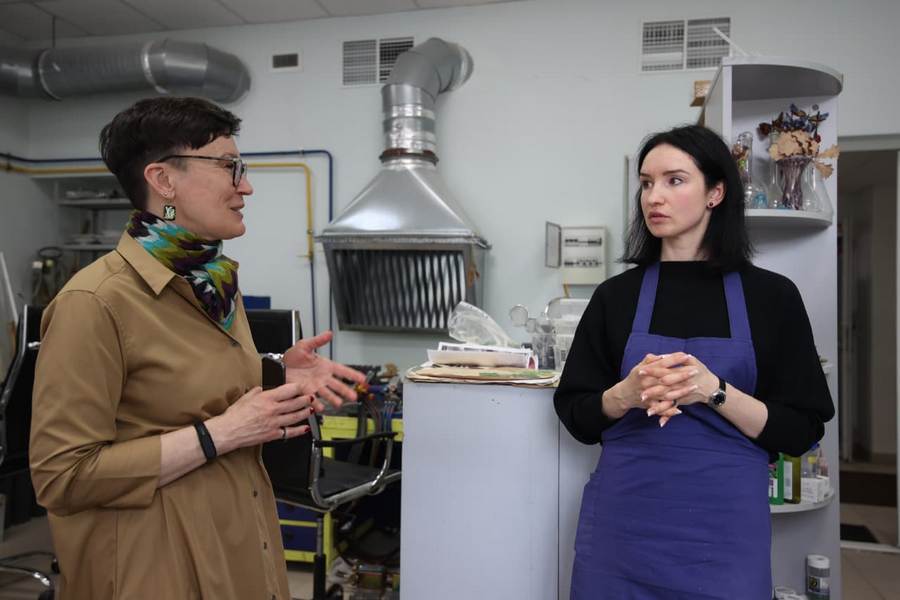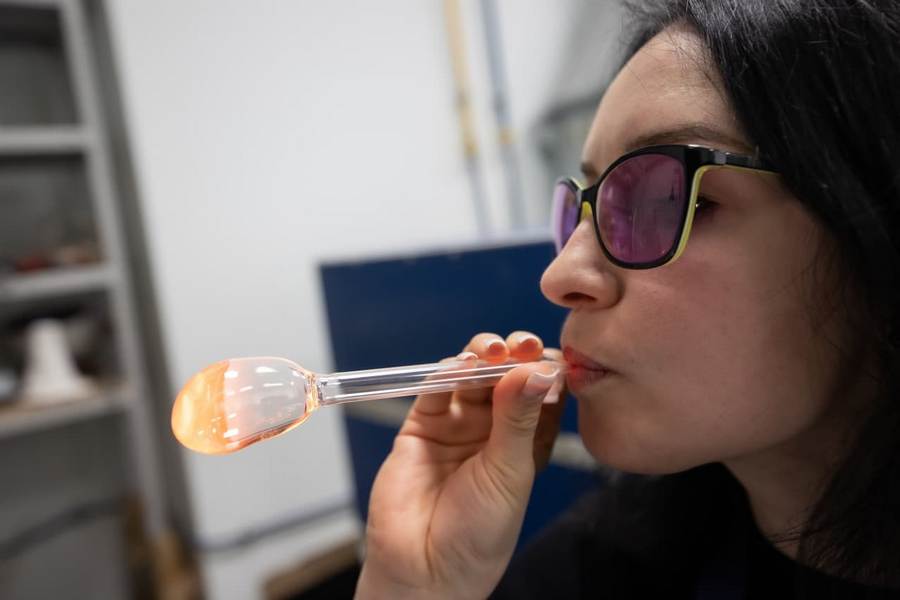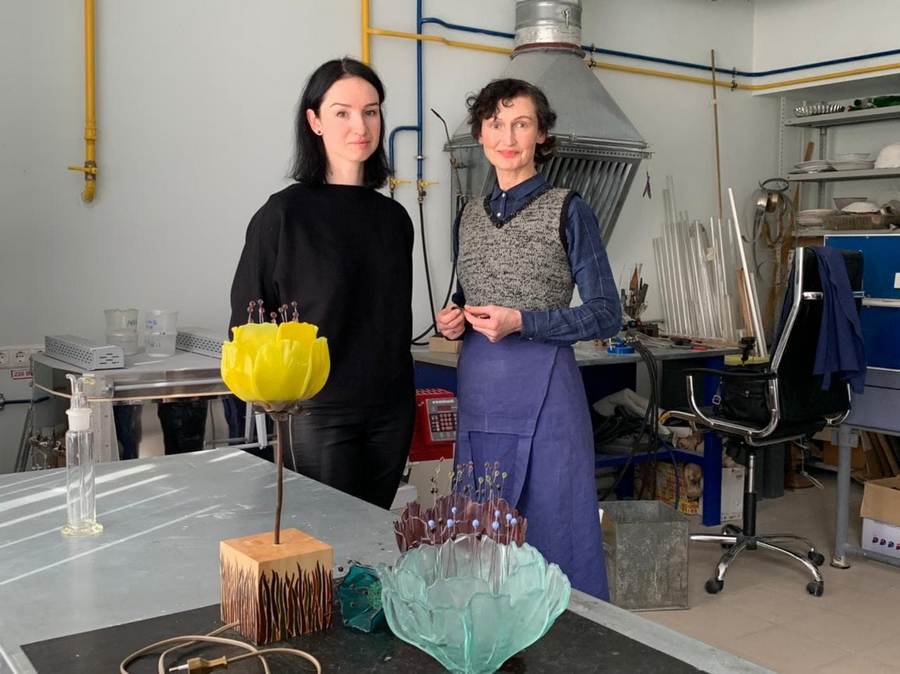Glassblowers
To experience how a fancy glass bubble of a future vessel is coming to life at the end of a blow pipe, the Group of Scientific Communication did not have to go to Venice. There is a glassblowing studio right here, at the Experimental Section of Nuclear Spectroscopy and Radiochemistry (ESNSR) of our Laboratory.

 A piece of art created by DLNP glassblowers | Photo by Igor Lapenko, DLNP
A piece of art created by DLNP glassblowers | Photo by Igor Lapenko, DLNP
Once, there were three workshops at JINR where laboratory glassware for experiments was produced. After being renovated and equipped with modern tools, a current studio was opened thanks to the support by V. B. Brudanin and the DLNP Directorate. It is working, and every Institute’s unit can place an order here.
 Maria Pilipenko (Group of Scientific Communication) and Irina Shcherbakova | Photo by Igor Lapenko, DLNP
Maria Pilipenko (Group of Scientific Communication) and Irina Shcherbakova | Photo by Igor Lapenko, DLNP
Why is it so important for JINR to have an own glasswork? Because standard glassware does not always meet all the requirements. Specially tailored glass vessels are sometimes needed. They are produced according to drawings for a particular experiment. Sometimes, there are no precise drawings at all, and the item should be developed to its final state with concerted efforts of the customer and the glassblower on the spot. Here is an example of an order — the glassblowing studio is producing specialized glassware for ESNSR. It is delivered then to experimentalists. They fill the glass ampoules with styrene and bring them back to the studio to be sealed. The batch is 60 pieces. To complete such an order somewhere else could be not an easy task.
A glassblower is a dangerous and physically hard profession. Weighty glass workpieces should be turned over in the flame of a burner. The burners release unbearable heat. Glass dust can be inhaled during glassblowing. One careless movement — and sharp splinters will scatter around.


With all this in mind, we wonder that two fragile women work here — Irina Shcherbakova and Marina Shevchenko. Marina is an economist, and glass became once her passion and later — after many years of training and practice — a profession.
Irina realized even before the university that it was glass that she wanted to deal with. She graduated from the Stroganov State Academy of Arts and Industry in Moscow in the specialty “Art glass”. Both glassblowers took a one-year internship in the plant “Khimlaborpribor” in Klin.
 Irina Shcherbakova and Marina Shevchenko | Photo by Igor Lapenko, DLNP
Irina Shcherbakova and Marina Shevchenko | Photo by Igor Lapenko, DLNP
However, glass is a bit more for Irina and Marina than mere workaday routine and orders from JINR scientists. Glass is an art. The glassblowers create wonderful pieces in their free time using different techniques — molding, Tiffany, fusing — decorate them with ornaments and engravings.

Some of these pieces were pictured by Igor Lapenko. We just could not leave the studio for a long time — we were watching mesmerizing creation of fragile laboratory glassware, holding thin glass leaves in our hands, looking through lamp petals and enjoying them, and asking over and over again about subtle features of the ancient art of glassblowing.

